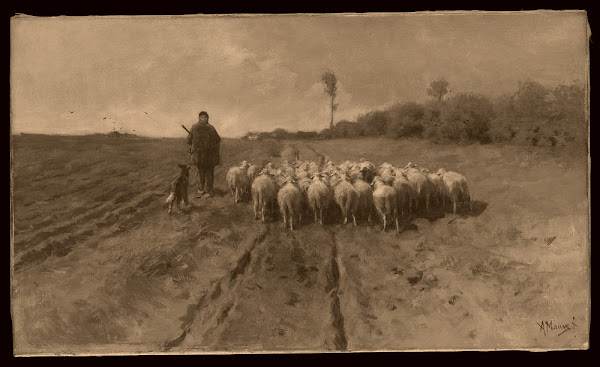What is the Canine Distemper Virus
Canine distemper virus (CDV) is a highly contagious viral disease that affects dogs and other animals, such as raccoons, foxes, skunks, and certain species of large cats. The virus belongs to the Paramyxoviridae family and the genus Morbillivirus, which also includes the measles virus in humans and the rinderpest virus in cattle.
CDV primarily affects the respiratory, gastrointestinal, and nervous systems of infected animals, causing a wide range of symptoms. Common signs of canine distemper include:
- Respiratory symptoms: coughing, nasal discharge, and difficulty breathing
- Gastrointestinal symptoms: vomiting, diarrhea, and loss of appetite
- Neurological symptoms: seizures, paralysis, muscle twitching, and imbalance
Transmission of the virus occurs through direct contact with an infected animal or their bodily fluids, as well as through contaminated objects and environments. Young, unvaccinated puppies and dogs with compromised immune systems are particularly vulnerable to infection.
Vaccination is the primary preventive measure against CDV. The canine distemper vaccine is a core component of the standard vaccination protocol for dogs and is usually administered as a combination vaccine, which protects against other common canine diseases such as parvovirus and adenovirus. Maintaining proper vaccination schedules and avoiding contact with infected animals are crucial for preventing the spread of canine distemper.
Can this virus be fatal
Canine distemper virus can be fatal, especially for puppies and dogs with weakened immune systems. The mortality rate varies depending on factors such as the animal's age, immune status, and the severity of the infection, but it can be as high as 50% in some cases.
In addition to the direct effects of the virus, secondary bacterial infections and complications can also contribute to the severity of the disease and may lead to death. Some animals may recover from the infection but suffer from long-term neurological damage, which can affect their quality of life.
Prompt diagnosis and supportive care are essential for improving the chances of survival. Treatment usually involves managing symptoms and providing supportive care, such as fluids for dehydration, medications to control vomiting and diarrhea, antibiotics to treat secondary bacterial infections, and anticonvulsants for seizures. There is no specific antiviral treatment for canine distemper.
When was this virus first recognized
Canine distemper virus was first recognized as a distinct disease in dogs in the early 1900s. The first description of the virus is attributed to French veterinarian Henri Carré in 1905. Carré's work led to further studies and a better understanding of the disease, its symptoms, and transmission.
In the following years, researchers worked on developing a vaccine to prevent canine distemper. The first successful vaccine was developed in the 1920s by American veterinarian Leland E. Carr, who used a live attenuated virus to immunize dogs. This breakthrough laid the groundwork for further improvements in vaccination and prevention strategies. Today, vaccines against canine distemper are a crucial component of routine canine healthcare, and they have significantly reduced the prevalence and impact of the disease in dogs worldwide.
Can this virus affect humans
Canine distemper virus (CDV) is primarily a disease that affects dogs and other animals, such as raccoons, foxes, skunks, and certain species of large cats. There is currently no evidence to suggest that the virus can be transmitted to humans or cause disease in humans. CDV is a distinct virus from the human measles virus, although they both belong to the same family (Paramyxoviridae) and genus (Morbillivirus).
However, it is essential to be cautious around sick animals, as they can potentially harbor other zoonotic pathogens (disease-causing agents that can be transmitted between animals and humans) in addition to CDV. It is always a good idea to practice good hygiene and take necessary precautions, such as wearing gloves and washing hands thoroughly, when handling animals, especially those showing signs of illness.
What is a Paramyxoviridae
Paramyxoviridae is a family of enveloped, single-stranded, negative-sense RNA viruses. These viruses are responsible for causing various diseases in humans, animals, and birds. Members of this family are characterized by their helical symmetry and their tendency to cause respiratory and neurological symptoms in their hosts.
Paramyxoviridae is divided into several genera, including Morbillivirus, Respirovirus, Henipavirus, and Rubulavirus, among others. Some well-known viruses within this family and their associated diseases are:
-
Morbillivirus genus:
- Measles virus: causes measles in humans
- Canine distemper virus: causes distemper in dogs and other animals
- Rinderpest virus: causes rinderpest in cattle (eradicated in 2011)
-
Respirovirus genus:
- Human parainfluenza virus types 1 and 3: cause respiratory infections in humans, primarily in children
-
Henipavirus genus:
- Nipah virus: causes severe encephalitis and respiratory disease in humans and animals
- Hendra virus: causes respiratory and neurological disease in horses and humans
-
Rubulavirus genus:
- Mumps virus: causes mumps in humans
- Human parainfluenza virus types 2 and 4: cause respiratory infections in humans, primarily in children
Viruses within the Paramyxoviridae family are primarily transmitted through respiratory droplets or direct contact with infected individuals or animals. Vaccines are available for some of these viruses, such as the measles, mumps, and canine distemper viruses, which have helped reduce the incidence and impact of the diseases they cause.










